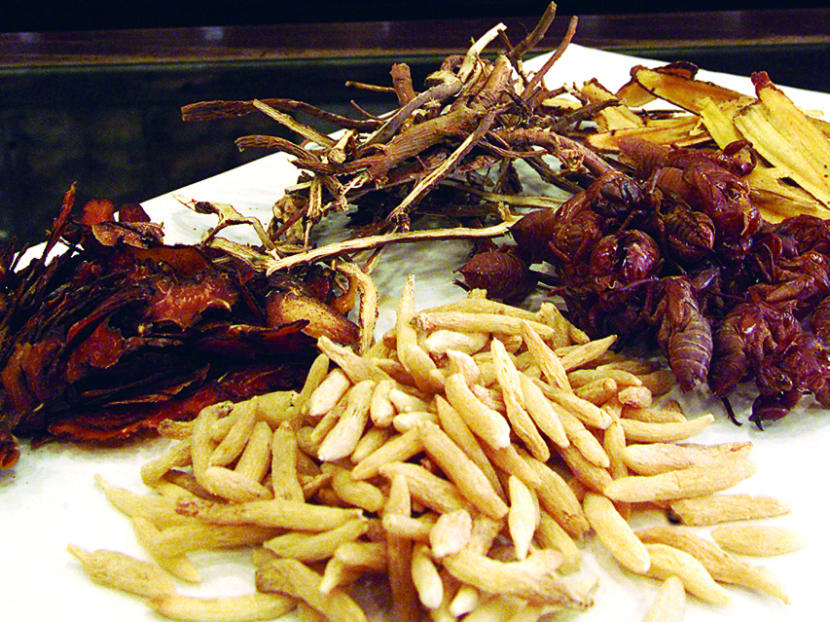Uniting East and West, to treat diabetes
Traditional Chinese medicine (TCM) is rooted in the philosophy of Taoism, which dates back more than 5,000 years.

Western research techniques can shed further light on why herbs like cordyceps are thought to be effective in the treatment of diabetes and hypertension. TODAY file photo
Traditional Chinese medicine (TCM) is rooted in the philosophy of Taoism, which dates back more than 5,000 years.
TCM practitioners use leaves, roots, stems, flowers and seeds, acupuncture, mind-body therapy and other strategies to treat a wide range of conditions. The Chinese materia medica lists hundreds of medicinal subsidies classified by their perceived action in the body.
But a number of challenges prevent the widespread implementation of the tenets of TCM.
For one, the lack of rigorous scientific analysis of TCM efficacy and mechanism of action is incompatible with the “evidence-based practice” standard advocated in accredited medical schools.
Two, poor regulatory oversight and inadequate means of testing herbal composition provide inconsistent results. And three, the nuances of the techniques are not well-documented, making it difficult for young, inexperienced practitioners to learn and utilise.
Numerous accepted therapeutics are derived from natural products and merging the standards of Western medicine with the wealth of anecdotal evidence available in the practice of TCM would provide great opportunities. In my opinion, applying the same type of scientific rigour to TCM procedures opens up new vistas of discovery.
There are several barriers that prevent the merging of these two medical practices.
WHAT CAUSES DISEASE
TCM relies on a view of the human body that differs from the tenets of Western medicine. In TCM, health and disease relate to the balance of different organs, rather than to molecular defects in particular tissues. These concepts are documented in the classic Chinese medical text Huang Di Nei Jing (Inner Canon of the Yellow Emperor).
Most TCM was discovered long before we knew much about human physiology, genetics, biochemistry, molecular biology and so on. Our understanding of pathology and the genetic basis of health and disease is now much more refined, even if our therapeutic interventions remain somewhat crude.
Most of the treatments that are widely implemented by Western practitioners, and all those used for diabetes, were discovered within the last 100 years. Modern researchers strive to understand how medicines work at the molecular level.
SCRUTINY AND REGULATION
Another barrier is that scientific evidence on the efficacy and action of herbal therapies is limited. The complexity of herbal preparations and poorly-defined conceptual foundations are a hindrance.
The National Centre for Complementary and Alternative Medicines in the United States, a division of its National Institutes of Health, found that most studies on TCM were methodologically flawed and that better research is needed.
Then, there is the problem of poor regulation. Inappropriate use of herbal therapies can have disastrous consequences. In most countries, dietary supplements and manufactured herbal products are not held to the same regulatory standard as those for prescription or over-the-counter drugs.
Reports of products contaminated with drugs, toxins or heavy metals, as well as those not comprising the listed ingredients, abound. Some herbs are very powerful, interact with other drugs and have serious side effects. For example, the Chinese herb ephedra (ma huang) can contribute to heart attacks and stroke, and preparations containing the herb have been banned in many countries.
A second concern relates to changes in batch-to-batch variability. The composition of a supplement can vary widely based on when, where and how it was harvested.
Active ingredients in plant-based therapies may differ based on seasonal variations such as whether it was a rainy or dry season, whether they grew on the north or south side of the mountain, or were grown in Taiwan, China or America, etc.
With little means of testing the efficacy of the preparations, other than asking the patient if it worked, there is little quality control.
RESEARCH IN SINGAPORE
At Duke-NUS Graduate Medical School, our laboratory, in collaboration with investigators at the National University of Singapore and Nanyang Polytechnic, with the support of Eu Yan Sang International, have undertaken an A*STAR-funded initiative to evaluate TCM used in the treatment of diabetes.
Extracts from the funguses Isaria sinclairii, Cordyceps sinensis, Cordyceps cicadae and Cordyceps sinclairii are thought to induce an “eternal youth” nostrum, and scattered reports suggest efficacy for warding off diabetes and hypertension.
One molecule isolated from Isaria sinclairii is a derivative of fat, termed myriocin. We believe this compound may be the component that accounts for the broad spectrum of actions of these TCM preparations.
Myriocin blocks the production of ceramides, which are toxic molecules implicated in the tissue dysfunction associated with diabetes and cardiovascular disease.
Our data reveals that treating rodents with myriocin ameliorates diabetes, atherosclerosis, hypertension, liver steatosis and cardiomyopathy. The ongoing study will determine whether cordycep extracts are efficacious and whether they work by modulating ceramides.
Analysis of a variety of cordycep preparations revealed that myriocin levels vary widely between preparations. An important outcome will be to determine whether the efficacy of batches can be predetermined based on their myriocin content.
This would have important implications on the quality control of the herbal preparations.
As the East becomes more Westernised and as the West becomes more Easternised, great possibilities for new synergies abound. The wealth of knowledge of the TCM practitioner should not be dismissed, but rather should be harvested by merging it with the modern scientific capabilities that allow for rigorous analysis of herbal preparation composition and efficacy.
Such an approach could reveal important information about disease pathology and therapy that dramatically alters our understanding of human health and disease.
ABOUT THE AUTHOR
Scott Summers is Associate Professor, Programme in Cardiovascular and Metabolic Diseases, and Director, Graduate Programme in Integrated Biology and Medicine, at the Duke-NUS Graduate Medical School Singapore.






